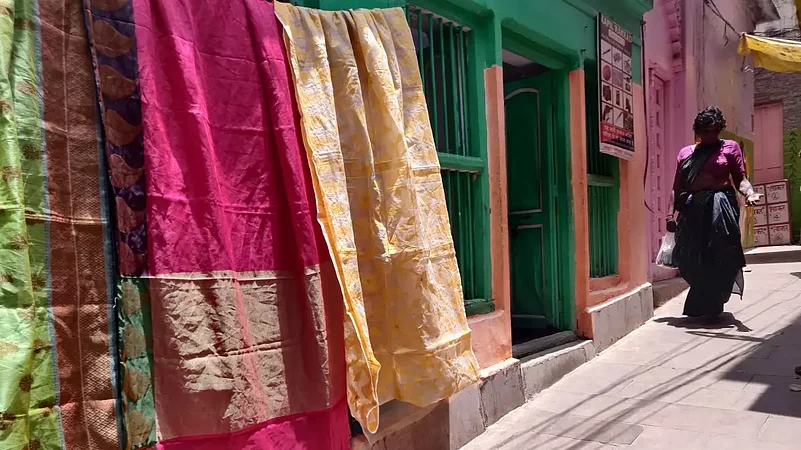When does the watchdog become the voyeur? I was faced with this question multiple times this year while covering stories of loss, violence, and hate.
Earlier this year when the situation got tense outside the Gyanvapi mosque in Varanasi on the Jumma (Friday) following a court-ordered survey of the mosque’s premises in response to petitions by some Hindu women, I saw journalists thrust their cameras in the faces of scared Muslim namazis , trying to get them to make confused or divisive statements. In Udaipur where similar sectarian tensions were on the boil following the murder of a Hindu tailor, I saw journalists doing the same with angry Hindu mobs.
Nothing really prepares a journalist for the field. How do you go up to a grieving mother and ask them to relive their worst moment? How do you remain neutral when asking rioters why they want to kill? How do you maintain bravado when stuck in the midst of a raging sea of humans, almost at the brink of a stampede? The pen is mightier than the sword but when I saw actual swords in the hands of mobs, I could not help but feel scared.
I have spent a lot of the past year covering hate and what it leaves behind. J-school does not teach journalists about trauma and pain. It teaches what a news peg is and what a good headline reads like. It teaches multimedia and theory and arms you with a few anecdotes passed on generationally between scribes. It’s only on the field that one first grapples with the full force of other people’s pain.
In Udaipur, for instance, I met the orphaned sons of a man whose throat had been slit by religious fanatics. In Lakhimpur Kheri, I watched an elderly couple grieve uncontrollably with a portrait of their young son who had been killed in political violence. I covered the stories of women who tried to set themselves on fire to escape domestic violence, of parents seeking justice for their raped and murdered daughter, of transgender persons living in fear of constant abuse and acid burn survivors living with scars that last a lifetime.
In the answer to a question about why I wanted to be a journalist in one of my first job interviews for a media organisation, I had said that I wanted to be the microphone for those whose voices are not heard. The perhaps naive response had drawn chuckles from my interviewees who said to each other, “didn’t we all?”.
Thinking about my year as a reporter, I revisited that question today. Why did I want to be a journalist? Do I still want to hold the mic to the marginalised? I realise that in doing so I might perhaps be attempting to write an apology for my own privilege and even attempting to soothe my morals by assuming the role of a “liberator”, a sort of messiah giving “voice to the voiceless”.
Which brings me back to the question: When does the watchdog become the voyeur?
Journalists have been known to lose their minds over such questions. In 1994, South African photojournalist Kevin Carter died by suicide a few months after taking his most famous photo, “The vulture and the little child”. The award winning image depicted the Sudanese famine and food crisis in one cruel frame that was described varyingly by newspapers across the world: “A vulture coolly eyeing an emaciated Sudanese child being stalked by a vulture”, the Time captioned it. A few months after winning the Pulitzer for the photo, Carter killed himself, reportedly unable to bear the trauma he witnessed in Sudan. His prize, fame and recognition were, after all, the consequence of someone else’s grief. An entire nation's grief.
Since then, many questions have been raised over how Carter got the image and what caused him the guilt. Some claim that he waited for several minutes with his camera to get the perfect shot instead of helping the collapsed child. Maybe he did. That’s what journalists do. We wait for the perfect shot. The most provoking moment. The most volatile quote. Even as documentarians, the focus is always on the grand gesture, the blood, on the costume, the tear, on the slander. Whatever will create the biggest impact.
Today , when the “impact” of journalism is measured not through social change but social media, Carter’s story stays with me, not just on field but off it too. It reminds me that my role is to be the watchdog. Not the voyeur. The ominous vulture in Carter’s photo is a metaphor for the evils that journalists capture but also perhaps a representation of the journalists themselves, feeding on pain and injustice, thriving on it.
As journalists, many of us start out with the idea of doing stories that will change the world. Perhaps the idea is not to change the world but to document the changing world. To tell stories and not to become the story. To be the silent chronicler instead of the megalomaniac microphone. A chronicler of everyday ubiquities.
















